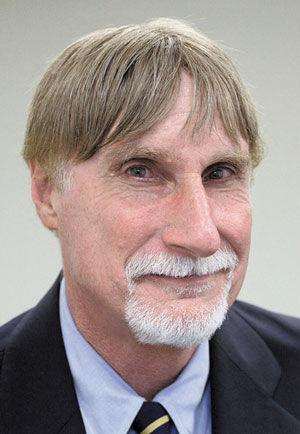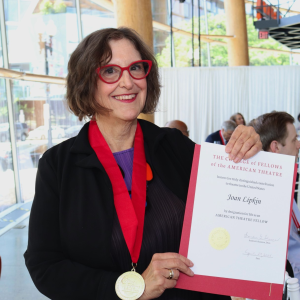Waiting for the political center to coalesce
Published February 25, 2016
I recall long ago reading Louis Hartz’s classic 1955 work “The Liberal Tradition in America,” which argued that the United States has been blessed with a relatively consensus-based political culture grounded in the liberal democratic principles embodied in the U.S. Constitution, emphasizing limited government, majoritarianism and the rule of law. In Hartz’s view, Americans were essentially conservative, and what they were conserving was liberalism.
What would Hartz make of our current politics, as the 2016 presidential election season heats up? First, we need to expand on Hartz’s thesis that America has tended to be hostile to extreme ideologues.
The Civil War was the one great breakdown in the American political system. Otherwise, the United States has been largely spared the kind of extreme ideological movements, violent revolutions and constant government turnovers that have afflicted so many countries in Europe and elsewhere.
Of course, we have had labor unrest, race riots and student protests, but nothing like the domestic turmoil in many European capitals, much less coup d’etats in Latin America and Africa. We’ve also had reactionary or radical political parties, including the Know Nothings, the Communist Party and other “third parties.” However, these have been just that — partisans on the fringe of American politics, garnering support from only a small percentage of the public, not enough to win even a single seat in the national legislature except on a rare occasion.
In France, the election of the president can come down to a choice between a leftist Socialist Party leader (Francois Hollande) and a rightist National Front Party leader (Marine Le-Pen), along with other competitive party options across the ideological spectrum. The American electorate typically is faced with just two alternatives: the Democratic Party or the Republican Party, often so close in ideology that critics have labeled the parties Tweedledee and Tweedledum.
At times, there has been enough differentiation between the two parties that voters have been offered a “choice, not an echo,” such as the 1964 election between Lyndon Johnson and Barry Goldwater and the 1972 election between George McGovern and Richard Nixon.
But, more commonly, there is so little space between the party platforms that the alternatives do seem more like Tweedledum and Tweedledum, such as the 1992 and 1996 races that pitted Bill Clinton against George H. Bush and Bob Dole, respectively.
What accounts for the relative moderation of American political life? Hartz attributed it to our fortunate history, namely the absence of any ancien regime of the sort that created distinctions between the aristocracy and the masses and led to a revolutionary temperament in France, as well as the availability of an almost endless western frontier that provided a safety valve for accommodating popular discontent and economic demands.
Others have found the explanation in our electoral system, namely the winner-takes-all structure of most elections, which advantages parties with broad rather than narrow appeal, limiting the ability of third parties to compete and fractious voices to be heard.
Anthony Downs, in “An Economic Theory of Democracy,” posited that, assuming most voters cluster around the middle in their political attitudes, “parties in a two-party system will deliberately change their platforms so that they resemble one another” in order to capture the center and thereby better position themselves for victory.
Public opinion polls reveal that most voters today, indeed, take middle-of-the-road views on most issues, including gun control, abortion, gay rights and the size of the welfare state. According to Stanford professor Morris Fiorina in “Culture War? The Myth of a Polarized America,” the average American behaves as Hartz noted, avoiding ideological extremes.
However, if the masses tend to be centrist in their beliefs, the same cannot be said about the elites, who seem to be the ones mainly responsible for today’s much-lamented “polarization.”
The field of candidates competing for the Republican Party presidential nomination has been dominated by an assortment of hard-right types (Donald Trump, Ted Cruz, Marco Rubio and Ben Carson), with more moderate voices such as Jeb Bush, John Kasich and Chris Christie unable to gain much traction.
Establishment, mainstream Republicans have been competing with the Tea Party and more conservative Republicans for the soul of the party, with the latter prevailing up to now.
Meanwhile, self-described democratic socialist Bernie Sanders (who, in 1988, honeymooned in the Soviet Union and who, in his memoir, calls early 20th century Socialist Party presidential candidate Eugene Debs his “hero”) has been pressuring his Democratic opponent, Hillary Clinton, to veer left, far beyond the “third way” ideological middle ground her husband occupied during his presidency.
A 2015 Gallup poll found that more than half of the country was unwilling to vote for a socialist for president, with even an evangelical Christian being far more preferable.
In channeling the Occupy Wall Street protest movement, the Democrats appear to be representing a slice of the electorate that is not much bigger than the “1 percent” super-rich whom the protestors had targeted. The Democrats are so far removed from mainstream America that, amazingly, neither Hillary nor Bernie were willing, when asked in a debate last fall, to concede that not just black, but “all lives,” matter.
A third party movement has tried to attract the support of the great middle of the electorate: the so-called No Labels camp headed by former Democratic U.S. Sen. Joseph Lieberman and former Republican Utah Gov. Jon Hunstman. But it has gone nowhere.
What thus far has driven the two parties to adopt highly ideological positions removed from the preferences of most voters is our ill-conceived presidential nominating process. Adopted after the 1960s to replace the old “smoke-filled-room” process that previously had privileged party bosses in selecting the party’s standard-bearer, the current system requires presidential candidates to compete in primary elections and caucuses in which, due to apathy, only a small fraction of the general electorate — the most rabid and dogmatic segment — participates.
So, every four years, we are at risk of selecting a president who represents only an extreme element. What ordinarily happens — what we can only hope for this time around — is that, eventually, as the general election approaches, the pressures that Hartz and Downs observed will come into play. Hopefully, Hillary, the presumed Democratic nominee, will have come in from left field, while Donald, or whoever the GOP taps, will have come in from right field.
The country arguably needs a center fielder even more than the Cardinals. If neither the Democratic nor Republican contender moves toward the center, I may sit out the election, unless Michael Bloomberg gets called up.















